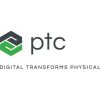Ohayou Gozaimasu. This week the term specific to Japan, the doctor would like to introduce to the readers is “gomen nasai.” Why is this term important? First off, it means “I am sorry.” For device manufactures failing to comply with Ministerial Ordinance 169, these will be the first three words received from PMDA, followed by “your company’s medical devices are not approved for introduction into Japan’s device market place.”
Dr. D would like to let the readers to know, building medical devices in a garage or basement is a bad thing. Who knew? Seriously, the control of production and service provisions should dissuade a rationally thinking individual from even considering such a silly proposition. But hey, Dr. D is an old guy and he has witnessed a lot of interesting locations where some level of medical device assembly has occurred, including a garage. The doctor is quite sure most device companies would not want to deal with the resulting dégringolade (look-it-up) that would occur if PMDA found out devices were being built in a garage or basement in Las Vegas, Nevada, with no viable controls in place. But hey, putting the family to work could result in cheap labor, no need to outsource. All kidding aside, this week’s guidance will review expectations and requirements for medical device manufacturing.
Ministerial Ordinance Number 169 (2004)
Chapter Two “Manufacturing Control and Quality Control in Manufacturing Sites of Medical Device Manufacturers, etc.”
Section Five – Product Realization
(Control of Production and Service Provision)
Article 40 The manufacturer, etc. shall plan and carry out the production and service provision under the controlled conditions including the following, as applicable.
- The availability of the information that describes the characteristics of the products,
- The availability of the documented procedure, documented requirements, work instructions, and reference materials and reference measurement procedures as necessary,
- The use of the suitable equipment,
- The availability and use of the monitoring and measuring devices,
- The implementation of the monitoring and measurement in accordance with the provisions of Articles 57 to 59,
- The implementation of the release, delivery and post-delivery activities, and
- The implementation of the defined operations for labeling and packaging defined in the documented procedure, etc.
2. The manufacturer, etc. shall establish and maintain records for each batch of the products that provides traceability to the extent defined in the documented procedure in accordance with the provision of Paragraph 2 of Article 48 and identifies the amount manufactured and amount approved for distribution.
3. The batch record established in accordance with the provision of preceding Paragraph 2 shall be verified and approved.
(Cleanliness of Products and Contamination Control)
Article 41 The manufacturer, etc. shall establish the documented requirements for the cleanliness of the products in case where they correspond to the following cases.
- The products are cleaned by the manufacturer, etc. prior to the sterilization and/or their use,
- The products are supplied non-sterile to be subjected to the cleaning process prior to the sterilization and/or their use,
- The products are supplied to be used non-sterile and their cleanliness is of significance in use, or
- The process agents are to be removed from the products during the manufacture.
(Installation Activities)
Article 42 If appropriate, the manufacturer, etc. shall, in case where they manufacture the products concerned with the installation-control-required medical devices specified in Paragraph 1 of Article 93 of Enforcement Regulations, establish the documented requirements which contain the acceptance criteria for installing and verifying the installation of the medical devices.
2. The manufacturer, etc. shall provide the documented requirements for the installation and verification specified in preceding Paragraph 1 to the marketing authorization holder.
(Servicing Activities)
Article 43 If the servicing is the specified requirement, the manufacturer, etc. shall establish the documented procedure, work instructions and reference materials and reference measurement procedures, as necessary, for performing the servicing activities (hereinafter referred to as “servicing activities”) and verifying that they meet the specified requirements.
2. The manufacturer, etc. shall ensure that the records of the servicing activities carried out by them are maintained.
What device manufacturers need to know
Guess what? If you answered; “The control of production and service provision delineated within MO 169 is similar to ISO 13485,” you would be correct. Man, the doctor loves MO 169. Too bad regulatory requirements, world-wide, could not be premised on ISO 13485, but hey, ICH has tried. That being said, the first concept manufacturers need to know and understand is that medical device production must occur in a controlled environment. Now that does not necessarily mean in a clean room; however, adequate controls must be in place (building, facility, personnel, procedures, etc.).
It all begins with a product specification. Granted, the controlled environment is important; however, one cannot build a device unless they have an actually specification for the device to be built. I hope this sound like common sense to the readers because it sure makes sense to the doctor. Additionally, the product specification will eventually be translated into procedures, assembly instructions, component specifications, inspection instructions, testing instructions, bills-of-materials, manufacturing travelers, etc.
Furthermore, device manufacturers will need to consider, acquire, procure, draft, develop, or implement:
- Manufacturing equipment;
- Monitoring and measuring equipment;
- Product/batch release procedures;
- Product delivery (including servicing and installation if applicable);
- Post-market surveillance procedure(s);
- Device labeling;
- Device packaging; and
- Record retention procedure(s).
Moreover, the processes depicted in these bulleted points will require some level of validation, the discussion of next week’s Devine Guidance. Once again, please do not forget about the record-retention requirements. Just in case you have not noticed, medical device regulations are big on batch/lot record retention and batch/lot traceability. The Device History Record concept required by the FDA’s Quality System Regulation (21 CFR, Part 820) is a reasonable approach to pursue.
The doctor is going to let the readers in on another little secret, medical devices are expected to be clean and if sold as a sterile device, actually be sterile. MO 169 requires device manufactures to establish procedures to address device cleanliness. This is a weakness that Dr. D frequently sees during audits; device manufacturers not establishing a stand-alone requirement for product cleanliness. Instead the requirement is buried in a production traveler supported by a few words, “wipe product down with alcohol.” Wait a minute the doctor likes to drink alcohol. Does that mean a medical device should be wiped down with Jack Daniels? Folks, sorry but this will not meet the intent of MO 169. As a minimum, the procedure should contain:
- How each of the products are actually cleaned, with some granularity;
- Cleaning processes that are specific to sterile and non-sterile devices (granularity); and
- Types of processing agents the cleaning process is targeting (for example: removing particulate would not be acceptable unless the source of the particulate is specified).
If installation activities are required, typically for capital equipment, the device manufacturer must establish a written procedure that defines the installation process. If Installation must be performed by a trained technician, this too must be documented; including the evidence of training. The device manufacturer is also required to document all installation activities and the subsequent verification/acceptance activities. Once again, repeat after Dr. D; “Documented evidence is required to meet MO 169!”
Call the doctor crazy but if a device manufacturer is performing installation activities; I am pretty sure servicing activities are a natural progression. MO 169, similar to ISO, requires device manufacturers to establish a procedure, written instructions, etc. in support of servicing activities. This includes objective evidence that servicing was performed correctly. Repeat after Dr. D; “Records of servicing activities, including verification and acceptance (as applicable), are needed to support the concept of documented evidence.”
What device manufacturers need to do
First and foremost, device manufacturers need to read, understand, and comply with MO 169. Yes, the doctor knows that it sounds silly but you would be surprised how many folks actually fail to read and understand a regulatory document before attempting to take action. Regardless, the doctor will once again annoy the readers with one of his standard broken-record comments, “Create that requirements traceability matrix now (reference Table 1.0).” For those of you that have been following this entire series, Dr. D has actually been building it for you. All you have to do is remove the doctor’s make-believe procedure numbers and name and add your own. You are welcome “Do itashi mashite.”
Some of the watch-outs in regards to product cleanliness; organizations really do need a product cleanliness procedure that is prescriptive. Yes, special cleanliness requirements such as “no mice droppings on the catheters” can be placed into the production work orders; however, generic requirements can be collected and placed into a procedure. Additionally, if manufacturing is happening in a controlled environment (not a clean room); the environmental conditions for the controlled environment must be defined and monitored (again granularity please).
For manufacturers of disposable medical devices, if you are not involved in the capital equipment side of the business, then installation and servicing are probably not requirements. However, do forget to document the non-applicability of these requirements within your quality manual. For organizations that actually manufacture, install, and service medical devices (capital equipment). You need to write prescriptive procedures that define all aspects of installing, servicing, and accepting of the results of these activities. The doctor also strongly recommends clearly defining what a service call entails versus an actual customer complaint. Taking the time upfront as part of a robust post-market surveillance process will save you from significant pain later. This nightmare scenario will become a realization if it turns out that the installed medical device (capital equipment) turns out to be high-maintenance, due to an insufficient amount of time spent in design and development.
Procedure
|
Procedure Name
|
Requirement |
21 CFR, Part 820 |
EN ISO 13485:2003
|
MHLW MO 169
|
| 1254-1 Rev B |
Control of Production &
Service Provision |
Control of Production &
Service Provision |
|
|
Article 40 |
| 1255-1 Rev B |
Contamination Control |
Cleanliness of Products &
Contamination Control |
|
|
Article 41
|
| 1256-1 Rev A |
Servicing |
Servicing Activities |
|
|
Article 42
|
1257-1 Rev A
|
Installation |
Installation Activities
|
|
|
Article 43
|
Takeaways
In closing, the doctor will leave the readers with three takeaways from this week’s guidance. One – Dr. D strongly suggests writing a stand-alone procedure for product cleanliness, while placing special requirements into the actual production travelers. Two – Device manufacturers need to clearly specify the environmental requirements for a controlled environment, as they environment will influence product cleanliness. Three – If installation and servicing are applicable to your organization; all aspects of the installation, servicing, verification, and acceptance, including training requirements for individuals performing the work, is mandated by regulation.
Until the next edition of DG, when the doctor begins providing guidance on MO 169 – Chapter 2, Section 5 “Product Realization” (Articles 44 through 46 – Sterile Medical Devices and Validation), sayonara from Dr. D and best wishes for continued professional success.
- Code of Federal Regulation. (2011, April). Title 21 Part 820: Quality system regulation. Washington, D.C.: U. S. Government Printing Office.
- EN ISO 13485:2003. (2004, February). Medical devices – quality management systems – requirements for regulatory purposes (ISO 13485:2003).
- Ministerial Ordinance 169. (2004). MHLW ministerial ordinance 169 on standards for manufacturing control and quality control for medical devices and in-vitro diagnostic reagents. Retrieved June 1, 2012, from http://www.pmda.go.jp/english/service/pdf/ministerial/050909betsu3.pdf
Related Articles
-
The acquisition is expected to strengthen PTC’s closed-loop product lifecycle management offerings by extending the digital thread of product information into downstream enterprise asset management and field service management capabilities.
-
Connected devices already enable remote patient monitoring by collecting real-time data, such as injection date and time. With time, these benefits are likely to grow. Following are three areas where manufacturers are exploring new uses of digitalization in drug delivery…
-
Inspecting for quality after a process is completed is reactive and outdated. Instead, the future lies in predicting quality and quality issues. For medical device manufacturers, the advantages in predictive quality are so great they simply cannot be ignored.






